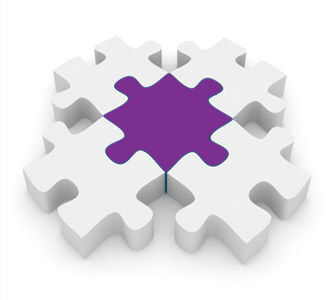I’ve been involved the implementation of accounting software for more than 20 years and have seen a great evolution of the accounting software marketplace. Currently the biggest shift taking place is the move from traditional “on premise” (the software is installed on a local server) to Cloud-based accounting systems. Because I work with both types of systems every day, I decided to highlight why vendors are moving their accounting software to the Cloud. Specifically I will focus this discussion on the investment cost associated with maintaining a traditional accounting software product versus using a Cloud-based accounting system.
Servers
For traditional “on premise” systems, you’ll typically find a server room with racks of routers, servers, hard drive arrays, and tape backup systems. Manning that room are one or more highly trained technicians who understand concepts like “active directory”, “network shares”, and “virtual servers”. All of this equipment is necessary to run the accounting system. In contrast, Cloud-based systems only require a desktop or laptop computer along with wired or wireless access in the office. The users simply access the Cloud-based accounting system from the Internet. Many companies using Cloud-based applications can rely on “IT for hire” firms for periodic IT support because their Cloud-based systems require so much less support.
Workstation compatibility
Traditional “on premise” accounting systems use the computer hardware, operating system, and network to make the system work. This requires that the workstations and servers meet the software vendors “compatibility checklist”. If the product will not run on Windows 8, then you would need to order new workstations with the older Windows 7 product until your accounting software catches up. Network servers need to be compatible too, so Windows Server 2003 or SQL Server 2005 might not work with your traditional system, requiring further upgrade and expense. Cloud-based systems are “OS agnostic”, meaning that as long as you can connect to an Internet browser you can log onto the accounting software. That also means users can run Cloud-based systems on a Dell laptop, an Apple IPad, a Galaxy tablet, even a smartphone if it can browse the Internet.
Updates & upgrades
Most traditional “on premise” systems require updates to resolve software bugs or compatibility issues. Software upgrades, which represent major changes to the accounting software, typically take one to several days and require that all of the users are out of the system. During that time the accounting staff cannot perform their functions while the software team performs the upgrade. If the business has invested in custom programming of the accounting system, they typically need to wait until the programmers have re-programmed their product to be compatible with the new release, and thus most users wait much longer before moving to a new version that might offer new features or functionality. In contract, Cloud-based accounting systems typically offer updates every three to six months, and provide that functionality to users as part of their normal subscription. Users can elect to turn on new features as they deem necessary, or keep their system exactly as they like it.
Data security
Now that data backups can be made over the Internet, system backups can finally be secured off the customer site. But in the event of a disaster (e.g. server failure, catastrophic weather event like a hurricane, etc.) the recovery of the accounting system still requires that the accounting system be down for a period of time until the computer system can be recovered. The recovery of the system could take as little as several hours or may stretch for days or weeks, depending on how much equipment needs to be replaced, its availability from the vendor, and how much data needs to be restored. Statistics on disaster recovery cite that one in four businesses that experience a disaster never recover. Cloud-based accounting systems are typically backed up in redundant locations, so that if one location experiences problems, it’s second (or third or fourth) can continue to allow users to access the accounting software without interruption. Further, if the users cannot access the business environment (the office was devastated by a hurricane and has no power), Cloud-based users can simply make a connection to the Internet from another location and continue to perform their accounting work.
In conclusion, Cloud-based accounting systems offer an opportunity for businesses to quickly recover their initial investment through a lower cost of ownership. They can also benefit from a quicker ROI (Return on Investment) while enjoying enhanced performance using the latest technologies available through the Internet.







